“Daredevil: Born Again” DPs Hillary Fyfe Spera & Pedro Gómez Millán on Lensing NYC’s Mean Streets
Daredevil built a fierce fandom when the show first appeared in 2015, introducing Charlie Cox as visually impaired lawyer Matt Murdock, whose alter ego roamed the streets of New York at night as Daredevil, a superhero with heightened senses and lethally honed fighting skills. After nearly a decade, Cox reprises his role in Daredevil: Born Again, and in the first of two already planned seasons, doesn’t disappoint.
With the tagline, “The devil’s work is never done,” Daredevil: Born Again picks up several years after the last episode of Daredevil, and a year after Matt has cast off the red suit and his nighttime crime fighting. His legal and ethical conflicts with Wilson Fisk (Vincent D’Onofrio), who has declared himself a changed man, continue. The former mob boss has pursued a career in politics as the elected mayor of New York City, but is Fisk truly changed? Or is that just a facade hiding the same violent, merciless mob boss Murdock has fought in the past?
Like its predecessor, Daredevil: Born Again was shot in and around New York. The city is essential to the storytelling, as there is no substitute for the gritty feel captured in movies like Mean Streets and Dog Day Afternoon. Now that all the episodes of the new series are streaming, The Credits spoke with cinematographers Hillary Fyfe Spera and Pedro Gómez Millán about filming in the iconic city and how they leveraged a stylized visual language to further this beloved Marvel superhero’s story.
What was the process of you two collaborating to give the show such a distinct visual aesthetic?
Hillary: I came on about four or five months before Pedro. When production on the show started in 2022, I was meant to do the first block, and Pedro the second. The strike happened, and then things got shifted around. We collaborated to make sure the new work after the break fit with what had already been done, and that his and my episodes had the same visual aesthetic. We did a lot of testing before he joined the show to set the look, and once he came on board to film his episodes, we were in constant conversation.
Pedro: Marvel had reached out to me on another show that didn’t work out, then came back to me and sent the script for Daredevil: Born Again, and I loved it. I was super excited to be part of a legendary show. Hillary and I worked together by finding time to talk a lot at night after hours. One of us was always shooting, so the schedules were always crazy, but we found time to bounce ideas off each other or problem-solve technical issues one or the other of us had. This was especially helpful when coming back after the strikes, figuring out what worked and what we could do to make the show even more specific or visually stronger.
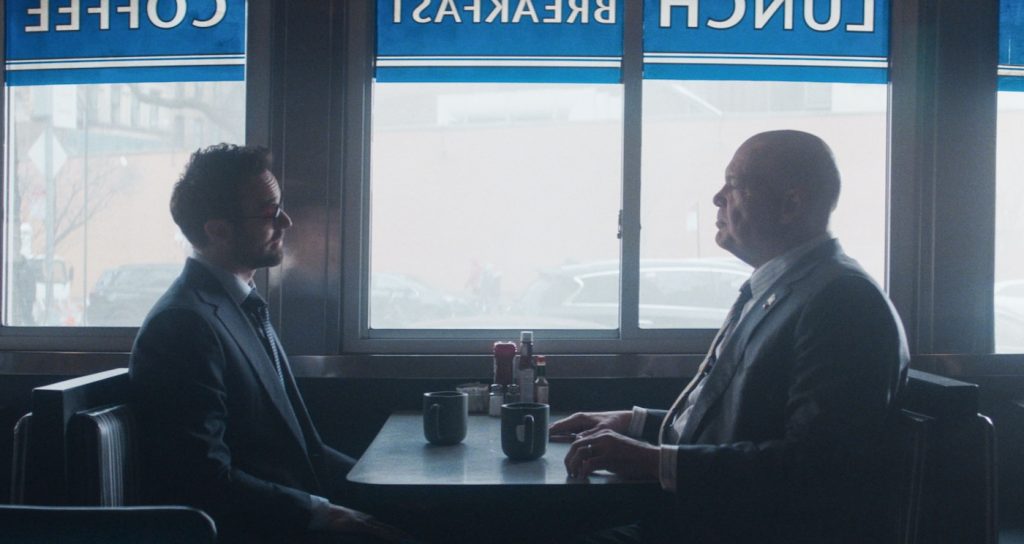
Daredevil: Born Again feels very much inspired by specific, gritty 70s films set in New York.
Hillary: We used 70s movies as a big north star for us, with specific 70s New York films. The French Connection, Taxi Driver, Friends of Eddie Coyle, The Conversation, and Dog Day Afternoon are some of my all-time favorites, and movies that felt like they were about character. I love big set pieces and big action sequences, but really, Daredevil: Born Again is about people, and being grounded in reality. The original Netflix version had a very noir comic book aesthetic, and we have some of that as well, but with naturalism as a base. We have moments that become heightened, using dramatic lighting and fun camera angles. It was important to me to have it all feel like the same conversation, starting with Fisk and Matt as human beings, and then seeing where they go.
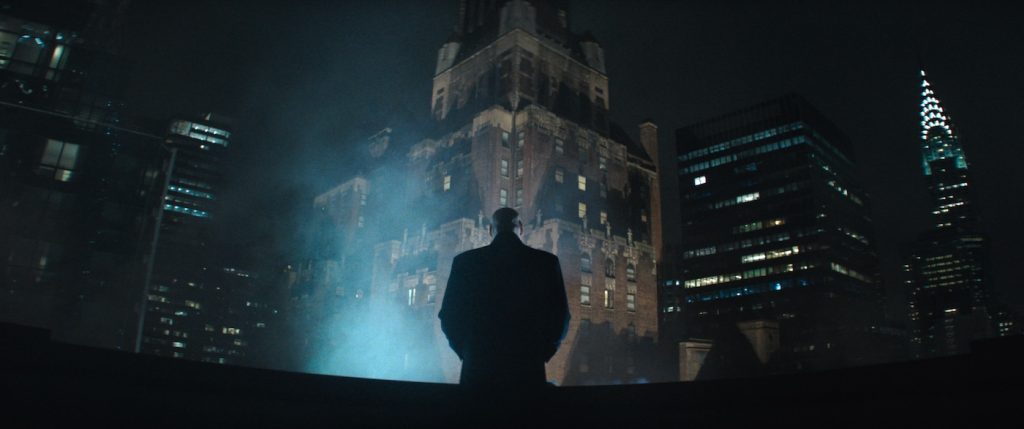
There is a very different visual language used for Wilson Fisk versus Matt Murdock. Can you both talk about that?
Pedro: Cinematography should always be about supporting the story and character, so we wanted to frame Fisk’s storyline and Matt’s storyline differently. They may have very similar emotional aspects, but they are very different characters, so with Fisk, we used a more steady camera, always on a dolly, and with strong symmetric compositions. We found ways to make him feel a bit ominous or menacing and intimidating, with low angles and monochromatic lighting. With Daredevil, it was the opposite. We had a lot of handheld or loose camera shots, and red light as a motif to visualize Matt’s emotions and troubles.
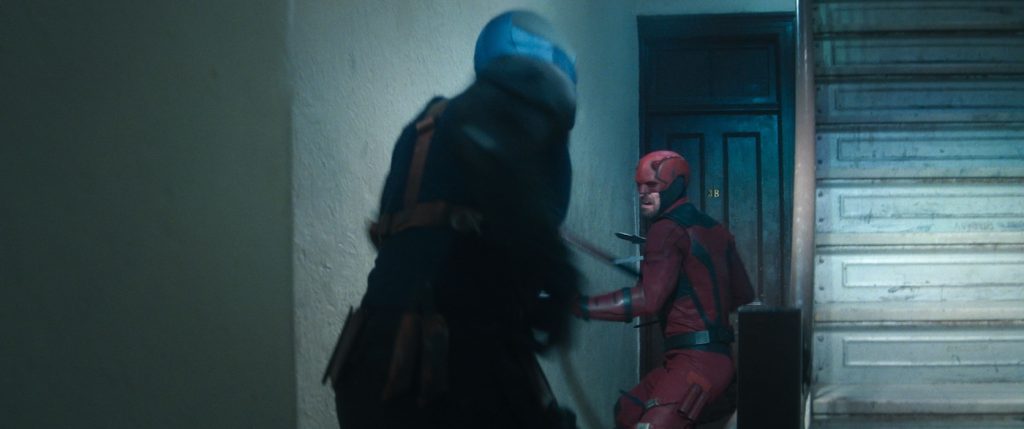
Hillary: Fisk’s world is more oppressive and institutionalized, which is why we used a locked-down camera. For Matt, using the handheld cameras gives it a more intimate feeling, and the audience feels more present with him. It’s meant to feel more part of his experience. Also, with lighting, it’s two distinct looks, with Fisk’s being more top sources and a lot of hard light or whiter light. Matt’s has a lot of warmer tones and sodium vapor for night, stuff that feels a little more textured and naturalistic. We had a lot of flares for him, too, because he’s having a very on-the-ground experience.
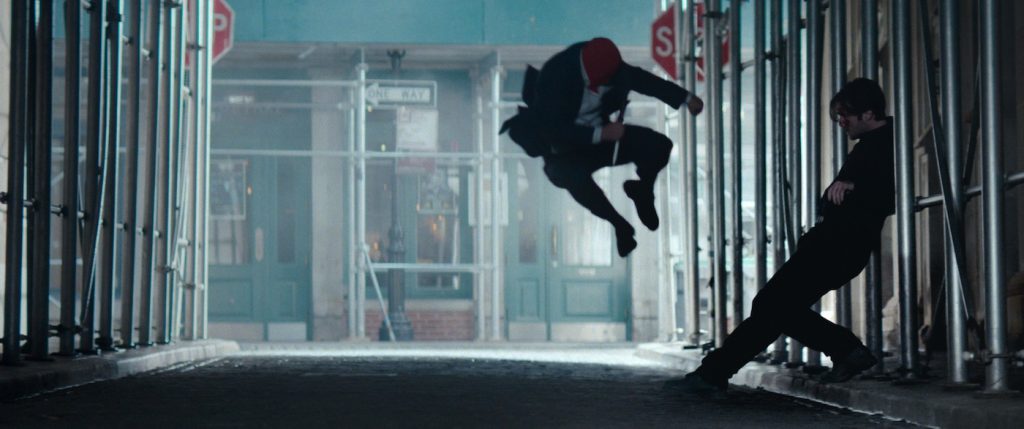
Hillary, in office scenes, Fisk is often filmed at his desk, but in one of the episodes you shot, there’s a great moment showing him with very bright light, which gives him this halo. That’s great visual language to express his conflicted nature and calls into question whether he has really changed.
Hillary: The halo moment was something we found on the day. Our production designer, Michael Shaw, who is an amazing collaborator, built this set with these three circular lighting fixtures, and we had a reflective table, and we were meant to shoot the table, but realized on the day what was happening. He had this halo around him, and it just fit perfectly. That was just a happy accident, and it plays well with the fact that you’re not exactly sure if he’s a changed guy. I’m glad it ended up in the edit. The same thing happened with Charlie as Matt, when we were out on the streets. We’d just have these moments where he’d come around the corner or come into the frame, and there’d be these perfect flares. It was like the universe was supporting our thesis.
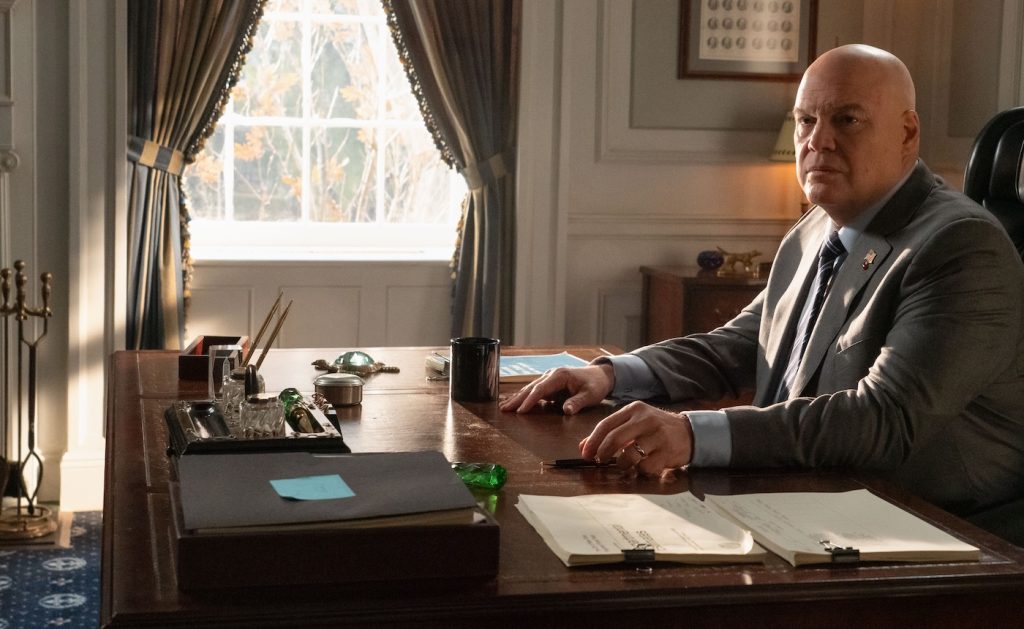
New York City is so integral to the show, and you actually filmed there, which had to be both a joy and a challenge. Pedro, the episode shot in the bank reminded me of Spike Lee’s Inside Man. Were those scenes shot at the same bank?
Pedro: Yes! Those scenes were very stressful because we shot multiple days without closing the streets of New York. It was at the Manhattan Trust Bank in the financial district. It wasn’t intentional, like “Oh, Inside Man, let’s shoot at that location,” but we literally had five options, and that was the best location for the story. I did look at the movie for reference, because I was dealing with these technical issues, like where to put the lights, and we weren’t able to close the streets, so I wanted to figure out how they did it, but they had one short scene during the day, and the rest was at night, so much of what they did wouldn’t work, because the whole shoot for that episode is during the day. So I put 18K lights through each window, and added a rig of lights above the windows in the interior of those really big windows on both sides, but we were shooting so much that at some point, you’d see them. I had to come up with a solution. So I wound up taking one whole side of the lights out, so that VFX would only have to take care of a few shots where the lights might be seen.
Hillary, one of the great locations used is Red Hook, which gives such a great texture to the storyline. What was your experience of shooting in New York City and Red Hook?
Hillary: We were so lucky to shoot in New York for this, because it was such an important part of the story. We were in the streets, dealing with the elements and weather and rats and all the very specific aspects of New York. One really fun thing for me was that I live in Red Hook, Brooklyn, which is a very warehouse-heavy maritime area of South Brooklyn. There are still cobblestone streets, great architecture, and old warehouses. When Red Hook became an actual location in the story, where Fisk has his port, we shot in real Red Hook, which is a rare thing, to shoot in the place that’s in the story. We got to shoot down by the water and, in the scene where Fisk is meeting about his development plans, use this real abandoned grain terminal in Red Hook that I’ve always loved. It’s beautiful, but it was also really challenging because while the fact that it’s abandoned gives it wonderful texture and production value, we were sometimes shooting at night, in rain or snow, or with high winds. All that was real. Shooting in New York, though, is always worth the challenge. New York really is like another character in the show, so it was essential to be there.
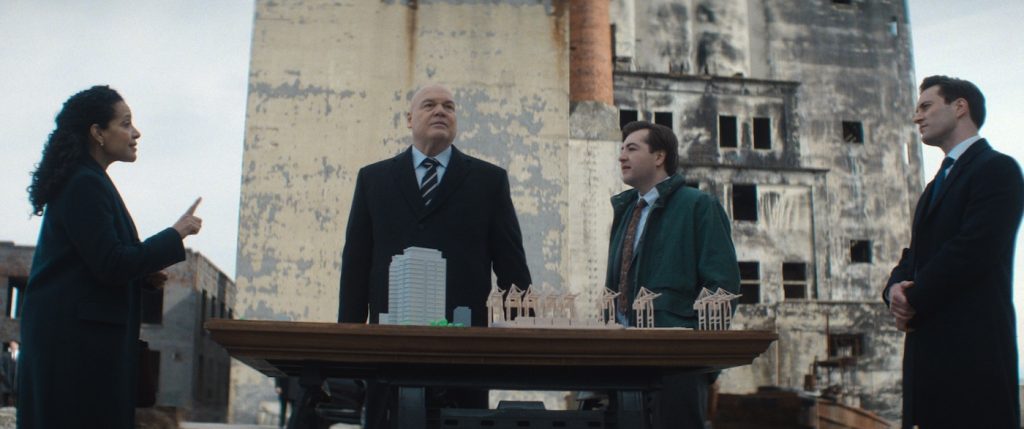
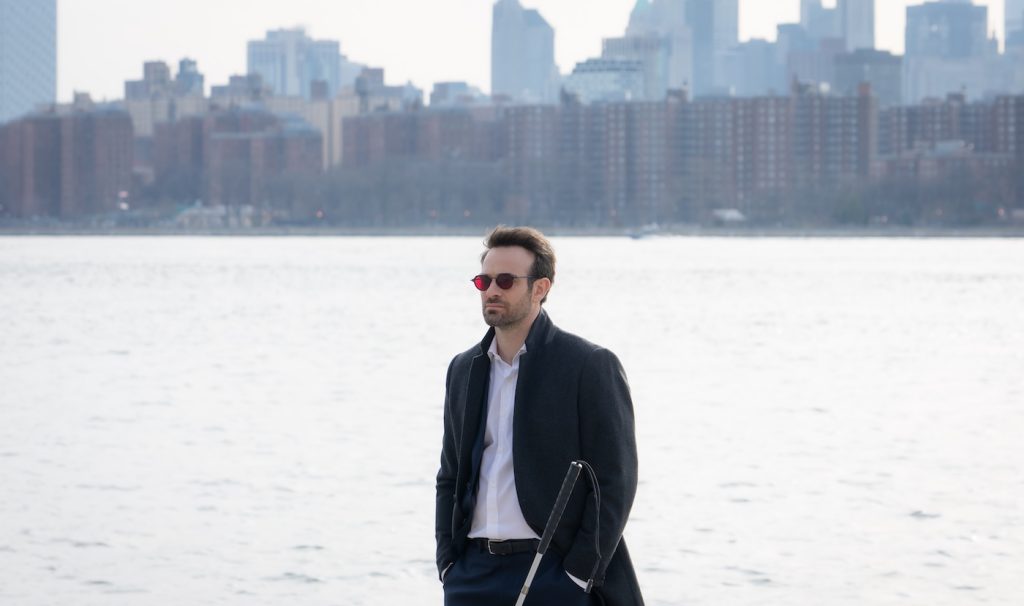
All episodes of Daredevil: Born Again are now streaming on Disney+.

